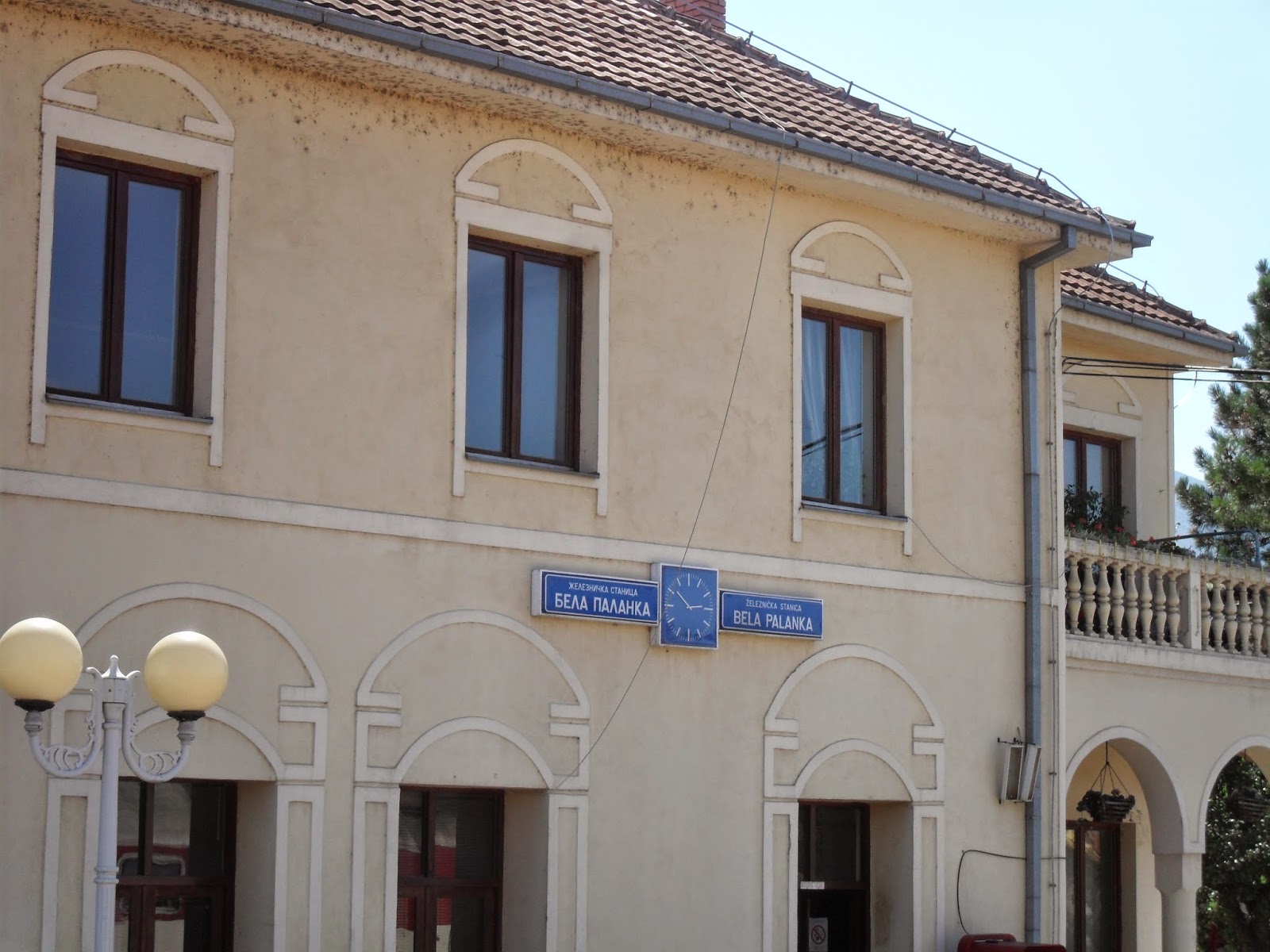One of my preparations was to exchange
currency. With Euro’s for Ljubljana in tow, I decided to trade those in for
Dinars now – as I will need them next week at any rate. So I spoke to the lady
on reception to change my notes & to pay for the room. Her, and the guy
with her, were both very polite. This proved by their help in calling the train
station for me, to see if I needed to reserve a seat for the Nis to Sofia train
(luckily we didn’t).
I then changed then packed. Liam went ahead,
downstairs, to book a taxi to the train station. Whilst downstairs waiting, we
could appreciate the views that the hotel boasted of the west of Nis –
terracotta roofs flowing down the hill, to a green plain stretching out towards
the airport.
Our taxi collected us, and delivered us to
our destination for 200 Dinars. I asked a woman at the desk for the platform
for the Sofia train. “1 or 3”. Great. So we waited on the platform. After 10
minutes a short train arrived. I asked a more official looking person. He said
it wasn’t this one, but it would arrive in 25 minutes (that was its departure
time). Anyway, we waited as the crowds grew for the train.
When it did arrive,
the embarkation was scruffy and there was a distinct lack of seats. So we
perched in the gangway, forced to stand. However, we were next to an open
window which was pleasant. This proved a plus over the first 2 hours of the
journey, as the scenery was spectacular.
Serbia is very green, hilly &
mountainous, and dramatic. Its population is also sparse. We chugged along
through wide, open valleys, and deep, narrow gorges. All in splendid sunny
weather. The train itself was similar to last nights – 2 carriages of seats and
one sleeper. It travelled (when it did) at approx 50 mph.
Before we got to the border, some seats came
available so we grabbed them. At least we had comfort, although the water
situation was looking tense. Anyway, the border control was quick on the
Serbian side (unique?) but on the Bulgarian side it was a rather more sedate
affair. I think we settled into the notion that we were always going to be
late.
By the time we left the Bulgarian side of the border, we were an hour
late. However, the last leg of the journey went like a breeze. Bulgaria was a
lot flatter, but agriculture was still dominant here.
We arrived at 19:00 at the dated, yet
platformed, station. I got cash, and some liquid, and then we walked to the
straight road that would take us to the hostel. At first, it looked grim but as
you got further into town it became pleasant, and akin to Prenzlauer Berg in
Berlin. After 20 minutes of back breaking walking, we found our location. Sort of.
We went down the wrong way of the road, but returned and found our side door.
Tucked behind old Soviet constructed façades, we witnessed a quaint old Inn. It
was quiet, as it was off the street, but bustling, as there was a hive of
activity. We went in and a woman welcomed us. She took our passports and aid to
grab the complimentary pasta and beer whilst she sorted our stuff out. After a
welcome refreshment, and catching 10 minutes on the wifi, the girl talked us
through our accommodation, house rules & the city map.
A lad called Damien, of Sofian heritage but
an English-speaking world upbringing, took us across the street to an
apartment, which our room was in. It was lovely and big, but the fuchsia walls
were garish. Once he left, we left for beers. However, once purchased, we saw a
sign for McDonalds. So we followed our hunger the 500 meters to it, and then returned
to fill ourselves and relax. A group of Spanish people returned, and offered us
a drink. We politely refused, as we were shattered. We then slept.





















